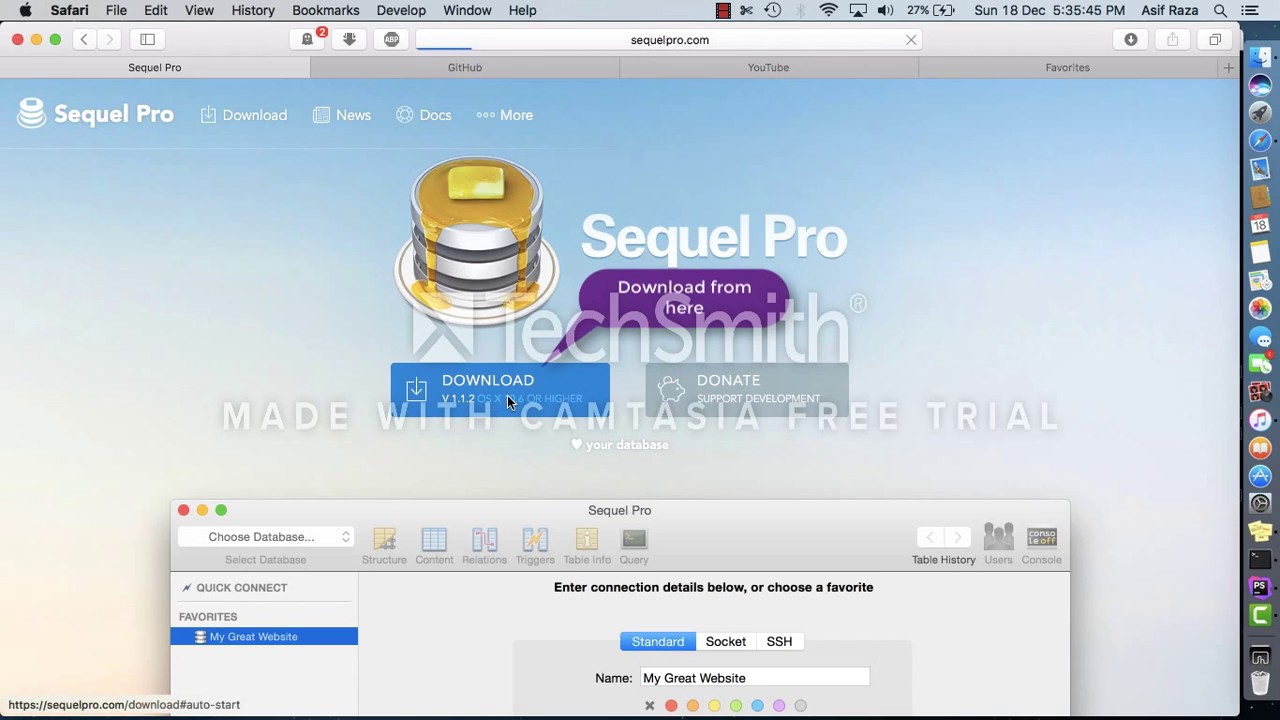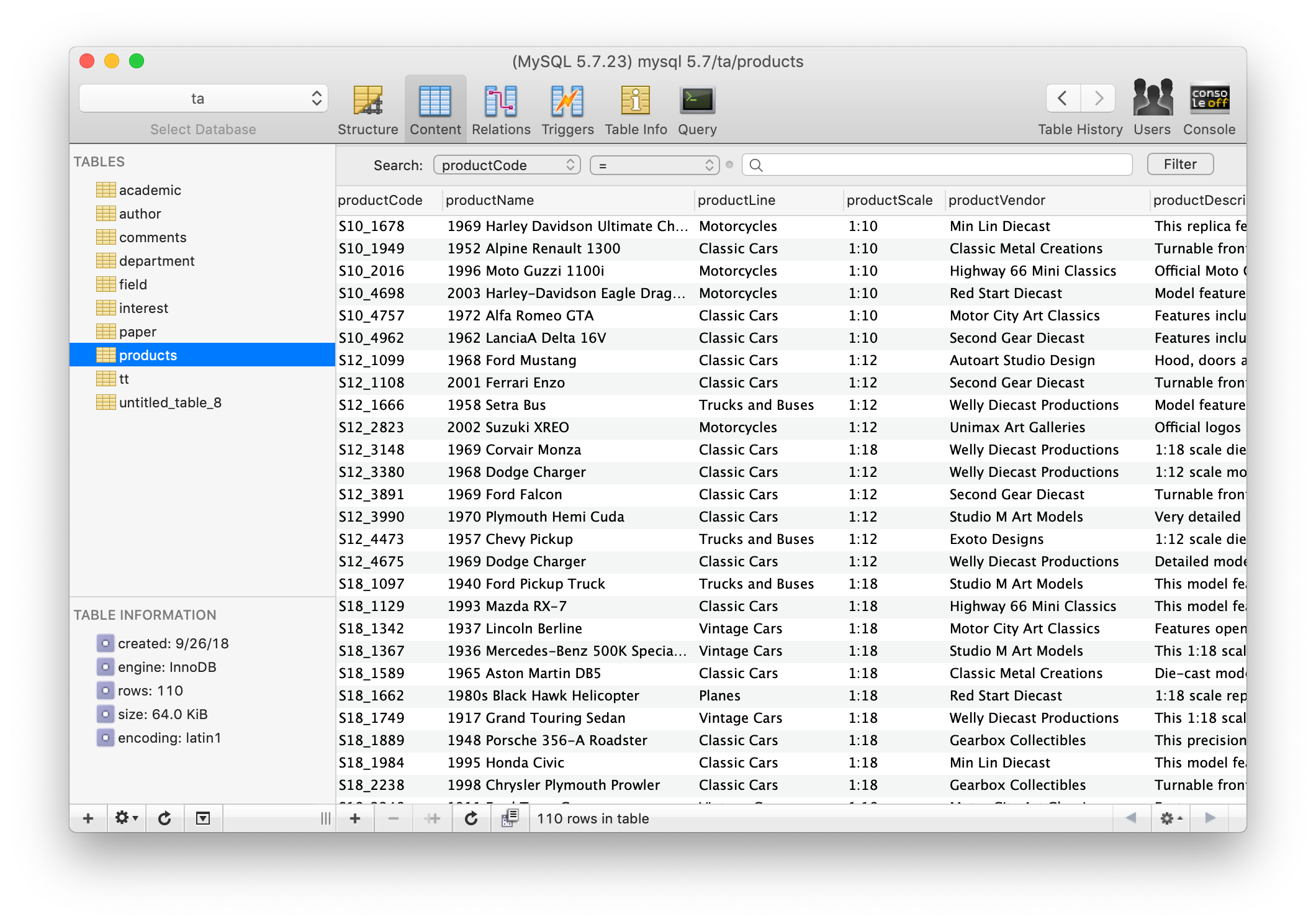

- #Connect cleardb mysql sequel pro how to#
- #Connect cleardb mysql sequel pro install#
- #Connect cleardb mysql sequel pro driver#
- #Connect cleardb mysql sequel pro software#
- #Connect cleardb mysql sequel pro code#

#Connect cleardb mysql sequel pro install#
lock file, install the necessary packages and deploy!Ĭlick on the View button to check out your app. In our case, the master branch is the prod. Note: You can have other branches and specify which branch you want for production. We don't have any CI service, so we don't need to enable that option.
#Connect cleardb mysql sequel pro code#
If it passes, the code will be pushed to production.Ĭlick to enable automatic deploys. A developers' code runs against the test suite. In a real world app, you'll have a test suite for your codebase. It also gives you an option to wait for your continuous integration process to pass before deploying to production.

Heroku allows you to enable automatic deploys with the push of a button. Heroku will search for your repo under your GitHub account and display it like so Now, type the name of the repo in the circled area and click Search. Developers can work on new features using the git workflow. The reason for choosing GitHub is to make development and maintenance process very smooth. Head over to /apps and create a new app like so:Ĭhoose a deployment method. Now that you have added the Procfile, go ahead and upload the project to GitHub or Bitbucket. If you are interested in using Nginx as the web server, then the content of your Procfile would be: web: vendor/bin/heroku-php-nginx Time to deploy! The first thing we'll do is to add a Procfile to the root directory of our app.Ĭreate a new file called Procfile without any file extension and add this: web: vendor/bin/heroku-php-apache2Ī Procfile is a text file in the root directory of your application that defines process types and explicitly declares what command should be executed to start your app on heroku. The app should be running like so:Īwesome! Our app works locally. Get composer here if you don't have it installed already. Go ahead and run composer install on your local machine to install these packages. json file which contains the list of packages that the application needs. env file.Īuth0 offers a generous free tier to get started with modern authentication. Ensure you assign them to the right variables in your. Copy out your client id, client secret, domain and callback url.In the Settings for your new Auth0 client app, add http : / /localhost : 8000 to the Allowed Callback URLs.Name your new app and select "Regular Web Applications".Go to your Auth0 Dashboard and click the "create a new client" button.You need to have an account with Auth0.Heroku runs your PHP app in a dyno, a smart container which provides a modern stack with your choice of web server(Apache or Nginx) and runtime(PHP or HHVM). Once you have that installed, go ahead and clone this simple starwars PHP application. If you don't have an account, go ahead and create one on.
#Connect cleardb mysql sequel pro how to#
Let's quickly take a look at how to deploy and maintain a PHP application on heroku. Heroku is a cloud platform that helps you deploy and host your applications the modern way. Next, let's cover how to deploy php applications to several cloud server platforms.
#Connect cleardb mysql sequel pro software#
A popular alternative software is PostgreSQL. Apache: The web server that runs the PHP code.Linux: The operating system that runs the other software packages.If you write a lot of tutorials and do POCs (Proof-of-concepts) like me, it's also a great choice for you!Ī generic PHP application involves the common LAMP (Linux, Apache, Mysql and PHP) stack. It's a great option for small, mid-sized, and enterprise scale businesses. In fact, many companies have moved their infrastructure to the cloud in order to reduce cost and complexity. You have the freedom to modify the server software to your needs.There are various benefits to hosting and deploying your applications on the cloud. Introduction to Cloud ServerĬloud servers are basically virtual servers that run within a cloud computing environment. In this tutorial, I'll show you how to deploy your PHP apps to different cloud server platforms such as Google Cloud, Microsoft Azure, Heroku, IBM Bluemix, and others. The certificate file was downloaded from ClearDB's site and the path is modified at runtime to point to a valid file location.TL DR: There is a popular mantra amongst developers that goes like this write, test and deploy. The hostname, port number and user credentials were taken from our the ClearDB dashboard for our datasource. Server= Port=3310 Database=XXX Uid=XXX Pwd=XXX SSL Mode=Required CertificateFile=cleardb-prod.pfx
#Connect cleardb mysql sequel pro driver#
NET WebApi project and uses the MySql.Data ADO.NET data driver to connect to the DB with the following connection string: After setup, we created a database in the ClearDb dashboard and populated the schema using MySQL Workbench.īut we cannot connect to this database from our app service when it is running in Azure. We purchased a Basic250 plan from ClearDB’s pricing page and provisioned it in the same Azure data center as our app service.


 0 kommentar(er)
0 kommentar(er)
